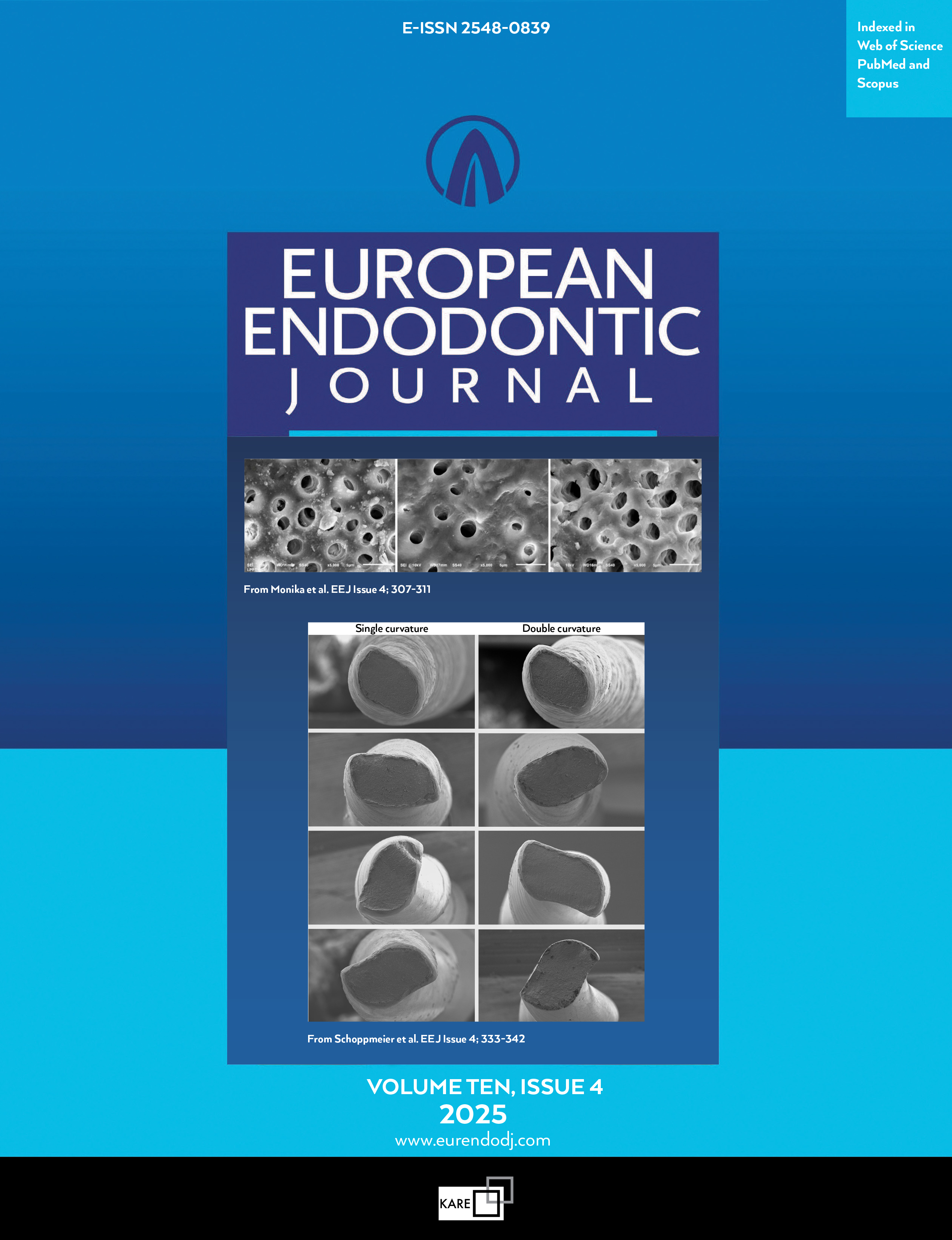Metrics
2024 IMPACT FACTOR
5 year Impact Factor
Eigenfactor Score
2024 CiteScore
Journal Citation Reports
(Clarivate 2025, JIF Rank)
Students Perception Towards Endodontic Training with Artificial Teeth: What Has Changed?
Simone Cesario1, Gabriella Rizzo1, M. Conceição Manso2, Claudia Barbosa3, Sandra Gavinha3, Tiago Reis41Faculty of Health Sciences, University Fernando Pessoa, Porto, Portugal2Faculty of Health Sciences, University Fernando Pessoa, Porto, Portugal; RISE-Health, Faculty of Health Sciences, University Fernando Pessoa, Fernando Pessoa Teaching and Culture Foundation, Porto, Portugal; LAQV-REQUIMTE, University of Porto, Porto, Portugal
3Faculty of Health Sciences, University Fernando Pessoa, Porto, Portugal; RISE-Health, Faculty of Health Sciences, University Fernando Pessoa, Fernando Pessoa Teaching and Culture Foundation, Porto, Portugal
4Faculty of Health Sciences, University Fernando Pessoa, Porto, Portugal; CDRSP, Polytechnic University of Leiria, Marinha Grande, Portugal
Objectives: This study assessed students' perceptions of artificial teeth (AT) after completing the Endodontics I, II, and III curricular units at the Faculty of Health Sciences, Fernando Pessoa University, Porto, Portugal. Additionally, the study aims to review existing literature on students' perceptions of three-dimensional (3D) printed models used in pre-clinical training, identifying current challenges and future needs for improvement.
Methods: A questionnaire was adapted, consisting of 24 questions, using a 5-point Likert scale, from 1 (Strongly Disagree) to 5 (Strongly Agree), in which students had to compare AT with natural teeth (NT) in various aspects of anatomy and endodontic procedures. For the review of literature, a search was conducted in PubMed, MEDLINE, Scopus, and Web of Science up to March 16, 2025. The search included the keywords: endodontics; natural teeth; artificial teeth; 3D printed teeth; teaching; pre-clinical training and dental education, both individually and in combination using the Boolean operator AND. Relevant original research studies and review articles, published in English were selected without time restrictions. Additionally, cross-references were examined for further relevant studies.
Results: Overall, students expressed a favorable opinion of AT in relation to external anatomy, radiopacity with files or gutta-percha, ease of acquisition, superior hygiene, and the simplicity of performing endodontic procedures. Conversely, students reported negative perceptions of AT concerning internal anatomy, pulp chamber size, canal shape and size, radiopacity, tactile sensation during access cavity preparation and pulp chamber entry, tactile feedback during endodontic procedures and debris removal, and the adequacy of AT for understanding endodontic techniques.
Conclusion: The incorporation of AT into endodontic training represents a significant advancement toward standardization and improved efficiency in dental education. However, AT cannot fully replicate the tactile feedback and anatomical characteristics of NT. Although AT offers advantages in terms of consistency and availability, their limitations in mimicking the tactile sensation and radiopacity remain critical factors influencing students' perceptions. These findings underscore the need for continued development of AT that more closely mimics the properties of NT. (EEJ-2025-03-047)
Manuscript Language: English
(134 downloaded)


